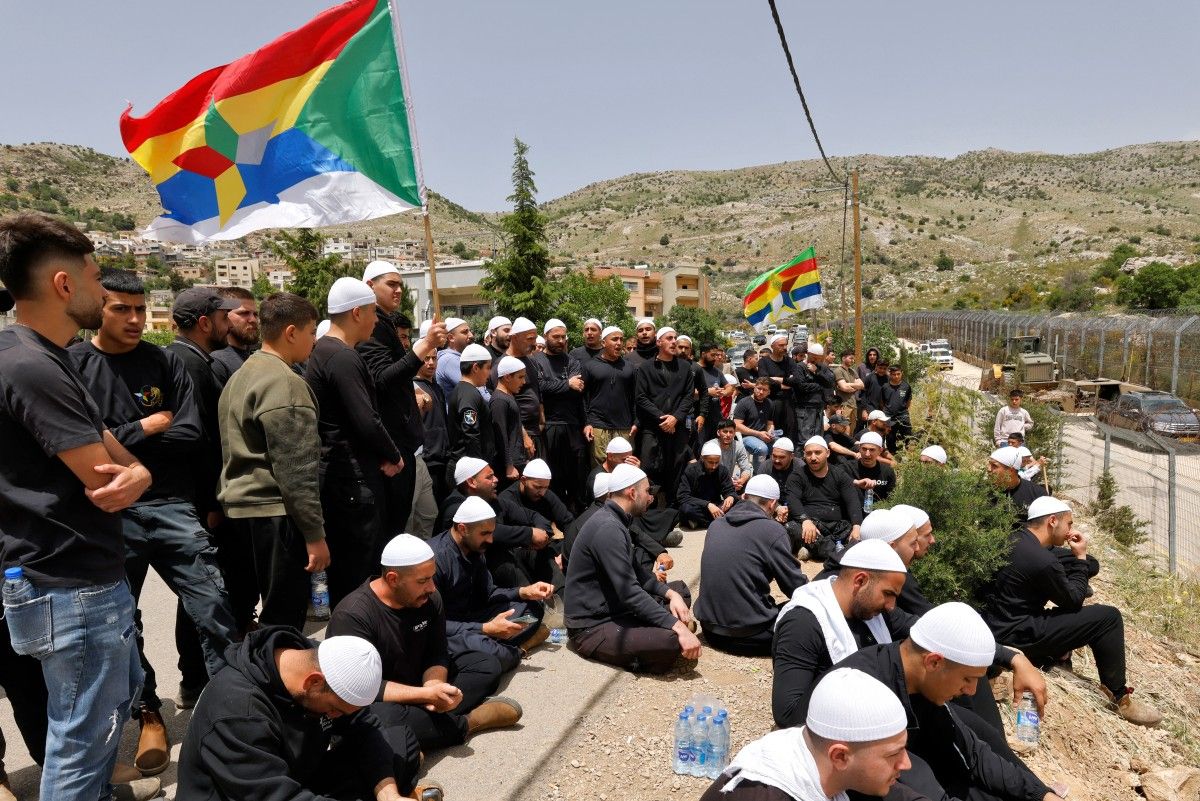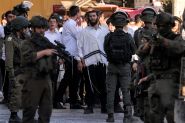- Home
- Arab World
- Syria's Druze: A Minority Caught Between Islamist Government and Israel

Druze men protest in solidarity with the Syrian Druze community near the border fence in the village of Majdal Shams, on the Israeli-annexed Golan Heights, on April 30, 2025. ©Jalaa MAREY / AFP
Syria's small Druze community largely kept out of the country's long civil war, but since President Bashar al-Assad's ouster in December, it has found itself confronting the new Islamist-led government amid military intervention by Israel.
Here is a profile of the religious minority that has been caught up in deadly clashes with armed groups linked to the government in recent days.
Secretive Minority
The Druze community accounted for around three percent of Syria's pre-war population of 23 million, or around 700,000 people.
They are concentrated in the southern province of Sweida, with smaller pockets around Damascus.
Druze are monotheistic and considered Muslim, but the community is otherwise highly secretive and does not accept converts.
They are viewed with suspicion by Sunni Islamist groups, who count among the ranks of Syria's new government whose roots are in the Al-Qaeda jihadist network.
In Israel and the Israeli-annexed Golan Heights, there are around 150,000 Druze.
Most of those in Israel hold Israeli citizenship and serve in the military.
By contrast, most of the roughly 23,000 who live in the annexed Golan do not hold Israeli citizenship and still identify as Syrians.
Some 200,000 Druze live in Lebanon.
Civil War
Syria's Druze largely stayed on the sidelines of the civil war, which erupted in 2011 after Assad brutally repressed anti-government protests.
Druze forces focused on defending their heartland from attacks and largely avoided conscription into the Syrian armed forces.
Sweida province saw more than a year of anti-government protests before Assad's ouster.
The Druze formed their own armed groups during the war. Some have begun negotiations with Damascus on integration into the new national army, following similar moves by armed factions elsewhere.
Rayan Maarouf, chief editor of local news outlet Suwayda24, said some 400 Druze fighters had joined the defense ministry's forces and around 500 others had joined the General Security agency.
Post-Assad
Assad hails from Syria's Alawite community, and as president, he sought to present himself as the protector of all minority groups against the Islamist-led rebels.
The new government has repeatedly sought to reassure minorities that they will be protected.
But last month saw sectarian massacres in the Alawite heartland on the Mediterranean coast, and this week several dozen people, including Druze fighters, have been killed in sectarian clashes near Damascus.
Since Assad's ouster, Israel has increased its overtures to the Druze, voicing support for the minority and mistrust of Syria's new leaders, whose forces it considers jihadists.
The Israeli government has said it has sent thousands of humanitarian aid packages to Syria's Druze community in recent months.
Two delegations of Druze clerics have made pilgrimages to a holy site in Israel despite the continuing state of war between the two countries half a century after a 1974 armistice.
In March, Israel warned Syria's new authorities not to harm the Druze after clashes in a Damascus suburb.
Druze leaders rejected the warning and declared their loyalty to a united Syria.
On Wednesday, Israeli Prime Minister Benjamin Netanyahu said the military "carried out a warning action and struck the organization of an extremist group preparing to attack the Druze population" near Damascus.
"A stern message was conveyed to the Syrian regime – Israel expects them to act to prevent harm to the Druze community," the statement from the Israeli premier's office added.
Armed forces chief Lieutenant General Eyal Zamir ordered the military to prepare to strike Syrian government targets if the Druze community faces more violence.
With AFP
Read more




Comments